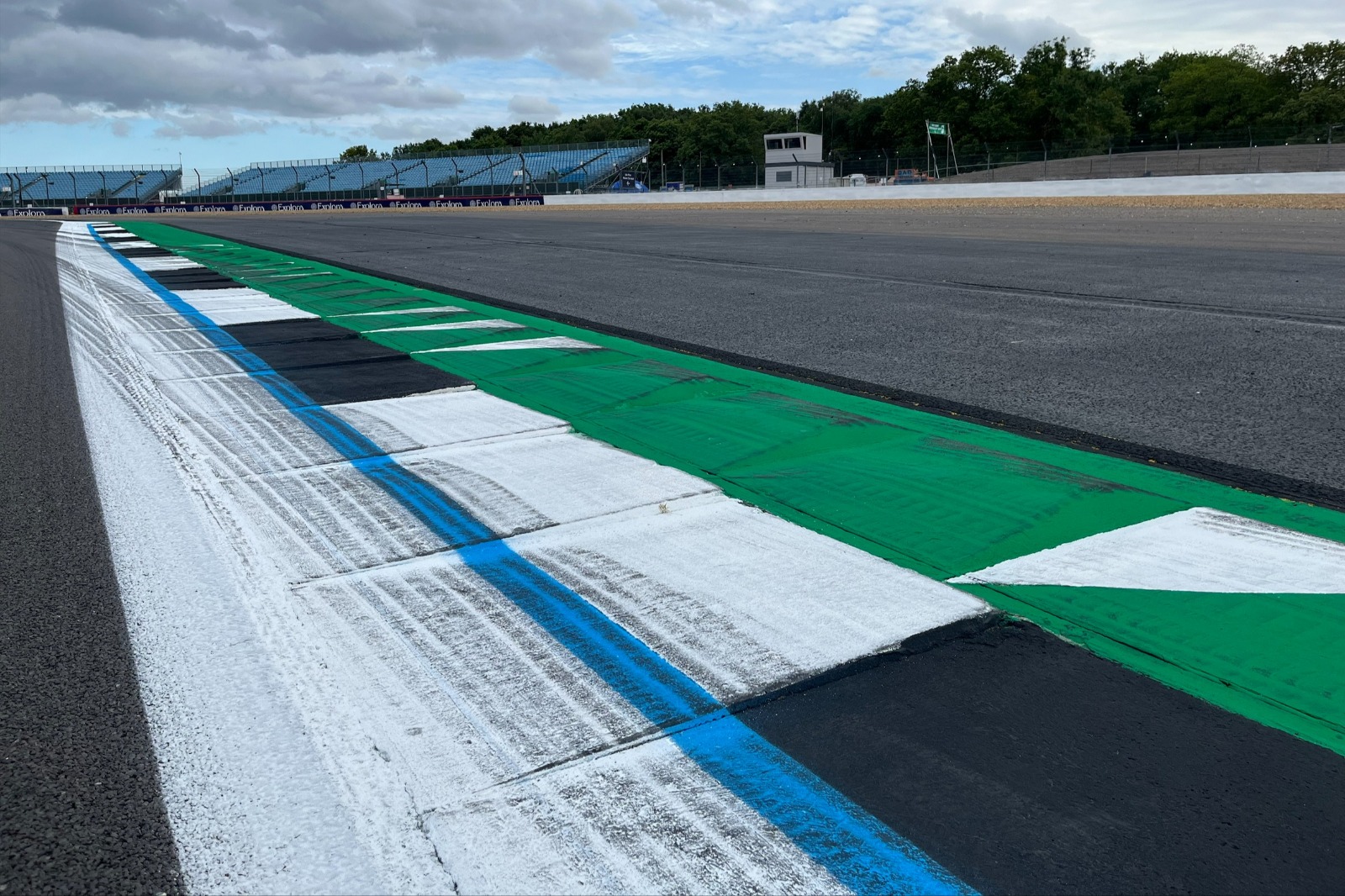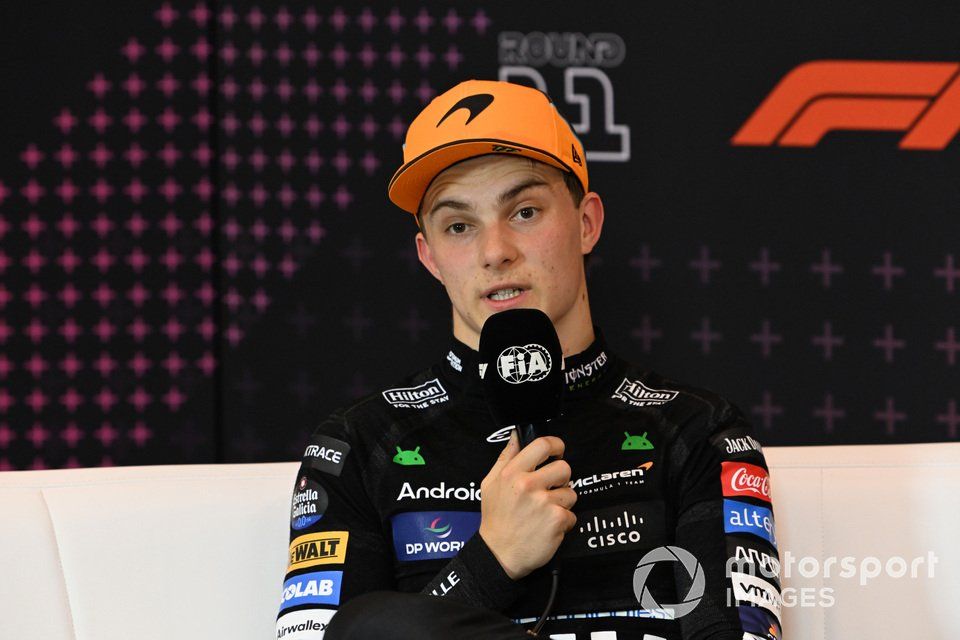The Silverstone track has been updated with elements of the solution deployed at the Red Bull Ring to try and solve Formula 1’s track limits problem.
A week ago, the FIA’s new arrangement of adding gravel and reducing kerb size to stop drivers automatically running out wide without consequence beyond a lap time deletion was revealed at the Austrian Grand Prix venue.
Now F1 has decamped to Silverstone, the drivers will be facing effectively the same system at two critical points of focus for track limits in recent years – Stowe and Copse – but with some differences.
At Copse – the fast right-hander that for many years was the first corner of the Silverstone layout – the change has been made without adding gravel.

The FIA has instead required the track limits white line to be painted onto the corner’s exit kerb, as it did in combination with mini-gravel traps being added to the Red Bull Ring’s final two corners, to reduce the width between the far edge of the kerb and the inside edge of the white line to 1.5m.
As was the case for Austria, this size has been taken because F1 cars are 2m wide and by making the gap smaller it is easier for the drivers to see when they are getting close to infringing track limits – a change the F1 pack as long been requesting.
The white line painted on the kerbs also features the same blue line addition as was used in Austria to assist the drivers even further.
Autosport understands that while there is no gravel deployed at this point other than far back in the run-off area, the FIA feels the grip level difference between the run-off and the track is enough for drivers to feel the edge of the track and adjust accordingly.
At Stowe, the changes are different and are understood to have been made with approval from MotoGP riders, who will race at Silverstone next month.
The gravel trap on the outside of Stowe has been moved towards the track by 6-8m in places, with the white line also now moved left on the exit kerb as has been done at Copse.
There is still a significant run-off area wide of the kerbs and between the extended gravel trap.
Autosport understands that the plan to use the same system at Silverstone as in Austria was developed for both tracks at the same time by the FIA.
During a review into the track limits issue last year, the governing body viewed these two circuits as the two that posed the biggest problem and so intended to act for the 2024 F1 events here.
Autosport also understands that while it may not be possible to fit new gravel traps or extend existing ones at other venues where the track limits issue comes into focus, the FIA is planning to deploy the white line movement part of the solution at some upcoming events.
This would at least reduce kerb width and discourage drivers from running so wide at certain points.
Watch: View from the Paddock — F1 British Grand Prix Thursday Update
The results of the track limits solution in Austria also rumbled on to Silverstone, with Williams driver Logan Sargeant and McLaren’s Oscar Piastri still annoyed that they lost important lap times in qualifying at the Red Bull Ring’s Turn 6.
This had its kerb width reduce by the white line movement, but only by 1.8m with a gravel trap slightly further to the right off a concreted area, with Piastri left so frustrated to lose his Q3 time to running wide at this spot he called the situation “embarrassing” in post-qualifying media appearances.
“I think for me there’s two points,” Piastri said on Thursday. “The first one is if there is space for a car to go off that we monitor it in a fair way.
“The evidence that led to my lap being deleted was from a helicopter that was only on me for that lap, which is a bit painful [and the point of McLaren’s protest into the issue] when there’s other people that potentially also went off that didn’t have a helicopter on them.
“So, I think it’s a very fine line and some discussions we need to have.
“But the easiest way to get rid of that is make the white line 20cm wider [at that point] and not have to worry about it at all.
“I’ll repeat my point from last week: I think the camera shot of that with half my wheel hanging off the concrete, almost in the gravel, for me that’s a really cool shot that everyone wants to see.
“So I think, yeah, it was just a shame that with all the work we did in a lot of other corners that we still left quite enough space for what is ultimately quite a painful issue for everybody.

Oscar Piastri, McLaren F1 Team, 2nd position, in the post Sprint Press Conference
Photo by: Mark Sutton / Motorsport Images
“Of course, it’s painful for me because I got it deleted, but I think for all the fans as well, I don’t think anyone wants to see ‘are they in, are they out?’
“There’s a white line there when if I went half a metre wider I would have completely trashed my floor, my car and not done a lap anyway, so I think there’s a couple of points on that.”
In other changes to the track, a «combination» kerb has been removed from the right-hand side of Village (Turn 3), per the event notes distributed by the FIA on behalf of race director Niels Wittich.
There has also been gravel added on the left-hand side of Chapel, plus the first part of the Club complex, which reduces the asphalt run-off to 1.7m on the right-hand side of the track.
The combination kerb on the inside of the first part of Club — Turn 16 — has been replaced with grass, with the asphalt run-off down the left-hand side of the pit straight also now lined with grass.








